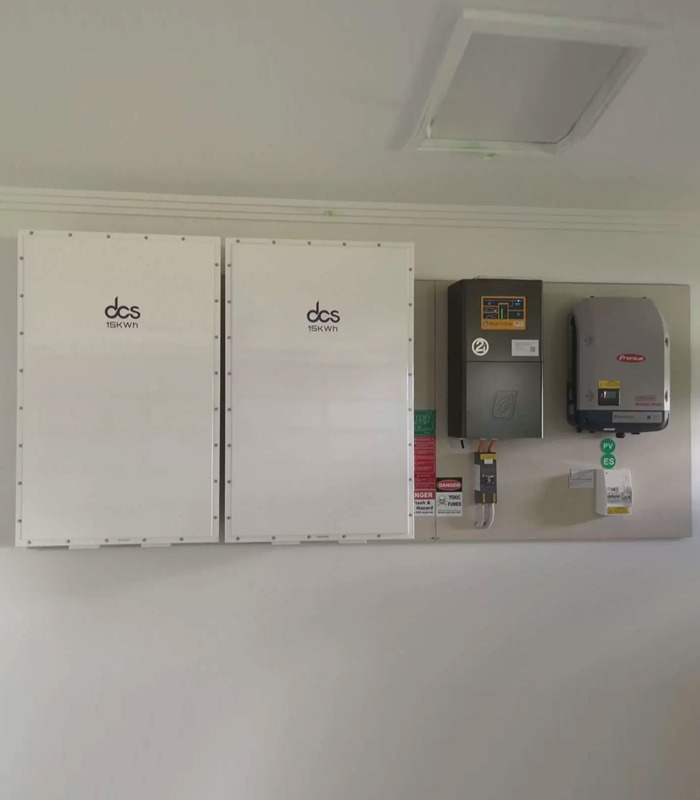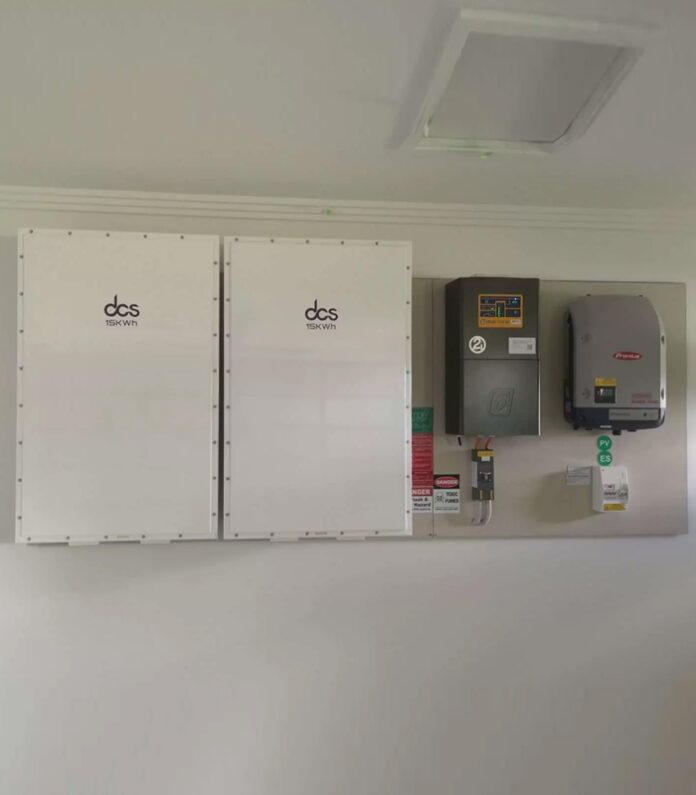In recent years, there has been a significant shift towards renewable energy sources as the world looks to combat climate change and reduce its reliance on fossil fuels. One of the key technologies leading this charge is photovoltaic energy storage. This innovative system allows for the capture and storage of solar energy, providing a reliable and sustainable source of power. This blog post will explore the rise of PV energy storage and how it is revolutionising the way we think about power generation.
Understanding Photovoltaic Energy Storage System
A photovoltaic energy storage system is a sophisticated integration of solar panels and energy storage units, such as batteries, designed to harness and retain solar power for future use. This dynamic system enables both domestic and commercial entities to capture surplus energy during peak sunlight hours.
The stored energy can then be utilised during periods when sunlight is scarce or when energy demands soar. The essence of this system lies in its ability to bridge the gap between solar energy availability and the electricity demand pattern of a property.
At the heart of the system are solar panels, which play a pivotal role in converting sunlight into electrical energy. This energy, however, is generated in direct current (DC) form, necessitating the use of inverters to transform it into alternating current (AC), making it compatible with home and business power systems. The subsequent step involves the storage of this converted energy in batteries for later use. These batteries are key components, acting as reservoirs of power that ensure a continuous energy supply, irrespective of external conditions.
By facilitating the collection and retention of solar energy, PV energy storage systems underscore a move towards self-sufficiency in energy production. They not only promise a reduction in electricity costs through maximised use of solar energy but also highlight a shift towards more environmentally sustainable energy practices.
The Components of a PV Storage System
A photovoltaic (PV) energy storage system is built upon several fundamental components that work together to capture, convert, store, and manage solar energy efficiently.
- Central to the system are the solar panels, which are responsible for absorbing sunlight and converting it into electrical power. These panels generate electricity in the form of direct current (DC), necessitating another crucial component – the inverter. The inverter’s role is to convert DC into alternating current (AC), making the electricity usable by household appliances and business equipment.
- Storage batteries form the next pivotal element in the system. They are designed to store the converted AC power, ensuring that excess energy produced during peak sunlight hours is not wasted but kept for future use. This aspect is especially beneficial for providing power during the night or on cloudy days when solar generation is limited. The type and capacity of the battery selected can significantly influence the system’s efficiency and overall performance.
- Finally, an often-overlooked but essential part of the PV storage system is the monitoring and control unit. This technology enables users to track energy production, consumption, and storage in real-time. It also allows for the optimisation of energy use, ensuring that the system operates at peak efficiency.
Together, these components form the backbone of a PV storage system, orchestrating the capture, conversion, storage, and management of solar energy in a seamless and efficient manner.
The Benefits of Integrating Storage into Photovoltaic Systems
The integration of storage systems within photovoltaic setups presents a multitude of advantages that extend beyond mere energy saving.
One significant benefit is the enhancement of energy independence, as households and businesses can significantly cut down on their grid reliance. This autonomy not only leads to substantial financial savings on utility bills but also ensures a constant power supply even during grid failures or blackouts.
Moreover, energy storage solutions within photovoltaic systems contribute to a more balanced and efficient grid. By storing excess solar energy generated during peak sunlight hours, users can release this energy back into the grid or use it during peak demand times. This action helps in alleviating the stress on the grid infrastructure, contributing to a more stable and reliable energy network.
Another noteworthy advantage is the environmental impact. Utilising stored solar energy reduces the need for fossil-fuel-based power generation, thus decreasing greenhouse gas emissions and contributing to a cleaner, more sustainable planet.
Different Types of Photovoltaic Storage Solutions
Exploring the array of photovoltaic storage options reveals a diverse market catering to various needs and preferences. Among the most popular solutions, lithium-ion batteries stand out for their high energy density and long cycle life, making them a favoured choice for residential and commercial applications alike. However, the initial cost may be higher compared to other options.
Lead-acid batteries, on the other hand, present a more cost-effective solution, albeit with a shorter lifespan and lower energy density. This makes them suitable for smaller systems or where budget constraints are a primary consideration.
Flow batteries offer a unique proposition with their ability to store large amounts of energy for extended periods. This characteristic is particularly beneficial for large-scale solar installations or in scenarios where energy demands fluctuate significantly. Despite these advantages, the complexity and cost of flow batteries can be a barrier for some users.
Finally, emerging technologies such as solid-state batteries are on the horizon, promising improvements in safety, energy density, and cycle life. These advancements could potentially redefine PV storage options in the future, offering even more efficient and reliable solutions.
Each type of storage solution carries its own set of pros and cons, and the decision on which to adopt should be informed by a thorough assessment of the user’s specific energy requirements, spatial constraints, and financial capacity.
Future Trends in Photovoltaic Storage System
The landscape of Photovoltaic storage system is on the cusp of transformation, with emerging technologies and material innovations setting the stage for a new era in solar energy systems.
Advancements in battery technology, particularly with the development of solid-state batteries, are anticipated to offer unprecedented improvements in efficiency and safety, along with extended lifespans and higher energy densities. This evolution promises to mitigate current limitations, making solar storage solutions more accessible and appealing to a wider audience.
Moreover, the integration of artificial intelligence and machine learning into PV storage systems is forecasted to revolutionise energy management. These technologies aim to optimise energy usage and storage, predicting user needs and solar production patterns, thus maximising efficiency and reducing waste.
Additionally, the advent of decentralised energy grids, where PV storage plays a pivotal role, is expected to enhance energy distribution, making it more resilient and less reliant on traditional energy sources.
As the global community continues its stride towards sustainability, the demand for innovative and efficient PV storage solutions is set to soar. This burgeoning interest will likely spur further research and development, driving down costs and fostering a more sustainable and autonomous energy landscape.
Challenges and Considerations in PV storage
Embarking on the journey to adopt PV energy storage systems is accompanied by its set of challenges and necessary considerations. Initial installation costs remain a significant barrier for many, despite a gradual reduction in prices as the technology matures.
Prospective users must meticulously evaluate the size of the system required to meet their energy needs, factoring in the efficiency and capacity of different battery types. The longevity of these systems and the batteries therein also plays a critical role; understanding the lifecycle and potential degradation of battery performance over time is essential.
Maintenance is another key aspect, with regular checks and upkeep needed to ensure the system remains efficient and effective throughout its service life. An often-overlooked consideration is the compatibility of the PV storage system with existing electrical installations and whether adjustments or upgrades are necessary to accommodate the new setup.
Additionally, the environmental impact and recyclability of battery components are important factors for those aiming to make sustainable choices. Planning for future expansion or scalability of the system should also be pondered upon, allowing for adjustments as energy needs evolve or as technology advances.
Recognising these challenges and considerations is pivotal in making informed decisions and optimising the benefits of PV energy storage.
How to Get Started with Your Own PV Storage System
Embarking on the journey towards establishing your own PV storage system requires a systematic approach. Initially, conducting an in-depth analysis of your energy consumption patterns alongside your financial capacity is critical. This preliminary step ensures you can accurately gauge the scale and type of system that aligns with your needs.
Subsequently, seeking the expertise of a reputable solar installer or an energy storage specialist is paramount. These professionals can provide invaluable guidance, from selecting the appropriate technology to the design and implementation of your system, ensuring it is tailored to your specific requirements.
Furthermore, engaging with these experts early on can facilitate a smoother installation process and help avoid common pitfalls. They can also navigate you through the potential maze of local regulations and identify any grants or incentives that may offset initial costs. Once your system is operational, regular monitoring is essential to maintain its efficiency and extend its lifespan.
Establishing a maintenance schedule with your provider will help in promptly identifying and rectifying any issues, safeguarding your investment. Through these steps, you can seamlessly integrate PV storage into your energy setup, paving the way for a sustainable and self-sufficient power solution.
FAQs
What is the expected lifespan of photovoltaic storage systems?
The lifespan of photovoltaic storage systems typically ranges between 10 and 15 years, although this duration can be affected by the specific type of battery used and the quality of maintenance it receives.
In the event of a power cut, can my photovoltaic storage system still supply electricity?
Certainly, one of the significant benefits of photovoltaic storage systems is their ability to provide emergency power during grid outages, ensuring that your property remains powered.
Are there any financial incentives provided by the government for the installation of photovoltaic storage systems?
Numerous governments worldwide offer incentives, such as tax credits and rebates, to encourage the adoption of photovoltaic storage systems. It is advisable to consult with your local authorities or utility provider to discover the incentives available in your area.
Final Word
The dawn of photovoltaic energy storage heralds a transformative era in our pursuit of sustainable and autonomous power solutions. This innovative approach not only facilitates a significant reduction in our dependence on conventional energy grids but also sets a new benchmark for environmental stewardship. With the ability to harness and utilise solar power more efficiently, individuals and businesses alike are poised to reap considerable benefits, from diminished electricity expenditures to bolstered resilience against power disruptions.
| Other Good Articles to Read |
| Niche Blogs Connect |
| Blogs 97 |
| Blog Stitution |
| Blogs Unplugged |
| Blogs Cotch Rouge |
| Blog Signatr |
| Blog Zilla |
| Consumer Forums |
| Finance Forums |
| G Blogs |
| Too Blog |
| Related Business Listings |
| Directory Submissions |
| Regional Directory |
